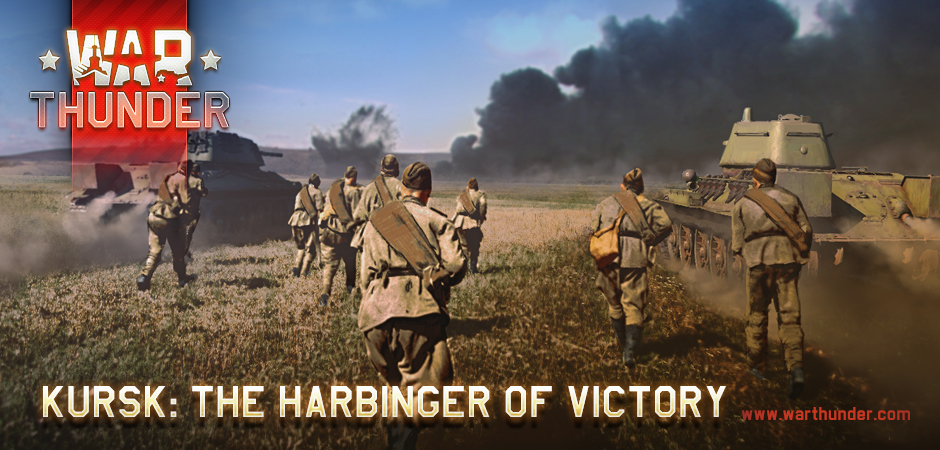
- For PC
- For MAC
- For Linux
- OS: Windows 10 (64 bit)
- Processor: Dual-Core 2.2 GHz
- Memory: 4GB
- Video Card: DirectX 11 level video card: AMD Radeon 77XX / NVIDIA GeForce GTX 660. The minimum supported resolution for the game is 720p.
- Network: Broadband Internet connection
- Hard Drive: 23.1 GB (Minimal client)
- OS: Windows 10/11 (64 bit)
- Processor: Intel Core i5 or Ryzen 5 3600 and better
- Memory: 16 GB and more
- Video Card: DirectX 11 level video card or higher and drivers: Nvidia GeForce 1060 and higher, Radeon RX 570 and higher
- Network: Broadband Internet connection
- Hard Drive: 75.9 GB (Full client)
- OS: Mac OS Big Sur 11.0 or newer
- Processor: Core i5, minimum 2.2GHz (Intel Xeon is not supported)
- Memory: 6 GB
- Video Card: Intel Iris Pro 5200 (Mac), or analog from AMD/Nvidia for Mac. Minimum supported resolution for the game is 720p with Metal support.
- Network: Broadband Internet connection
- Hard Drive: 22.1 GB (Minimal client)
- OS: Mac OS Big Sur 11.0 or newer
- Processor: Core i7 (Intel Xeon is not supported)
- Memory: 8 GB
- Video Card: Radeon Vega II or higher with Metal support.
- Network: Broadband Internet connection
- Hard Drive: 62.2 GB (Full client)
- OS: Most modern 64bit Linux distributions
- Processor: Dual-Core 2.4 GHz
- Memory: 4 GB
- Video Card: NVIDIA 660 with latest proprietary drivers (not older than 6 months) / similar AMD with latest proprietary drivers (not older than 6 months; the minimum supported resolution for the game is 720p) with Vulkan support.
- Network: Broadband Internet connection
- Hard Drive: 22.1 GB (Minimal client)
- OS: Ubuntu 20.04 64bit
- Processor: Intel Core i7
- Memory: 16 GB
- Video Card: NVIDIA 1060 with latest proprietary drivers (not older than 6 months) / similar AMD (Radeon RX 570) with latest proprietary drivers (not older than 6 months) with Vulkan support.
- Network: Broadband Internet connection
- Hard Drive: 62.2 GB (Full client)

From 15.00 GMT on the 5th of July until 07.00 GMT on the 8th of July
The event will be in the RB and SB game mode with historical vehicle setups.
You can find it in the “Events and Tournaments” tab of the game's main menu. 1
The Battle of Kursk, which began on July 5th and lasted until August 23rd, 1943, was the largest tank battle in the history of mankind. According to official data, roughly two million people, six thousand tanks and four thousand aircraft were involved in it.
After the Battle of Stalingrad, the results of which encouraged Soviet troops to go on the offensive, the Germans strove to change the situation and planned their own offensive operation in the summer of 1943 to change the course of the war. German leadership had their disagreements on this count: if Keitel tried to bring Hitler around to the idea of a general offensive, Guderian and Model opposed this. It was known in the German HQ that the Soviets expected the Germans to mount an offensive in the summer of 1943. However, the decision to launch Operation Citadel was taken nonetheless.
To tip the balance of power in their favour, the German leadership moved the latest vehicles to the future theatre of war: 134 PzKpfw VI Tiger tanks (having appeared only episodically in previous battles), 190 PzKpfw V Panther tanks, 90 Ferdinand SPGs and even some radio-controlled self-propelled Goliath mines.
The Soviet side primarily deployed the T-34-76 and T-70 tanks. The latter amounted to roughly 30% of all the tanks in the USSR towards this front. A small quantity of KV-1S tanks were also present. The first to move to the front line were the Soviet 152 mm SU-152 SPGs. Although there were only 24 of them, they performed well on the battlefield, easily destroying any of the Germans’ tanks, including their heavy tanks. For this reason, it was nicknamed Zveroboy (‘Beast Slayer’).
 |
The German assault, as part of Operation Citadel began on the morning of June 5th, 1943. The Soviet troops prepared to fight back against the enemy. After mass artillery barrages from the Germans and counter artillery preparation from the Red Army, Soviet troops took defensive positions and repelled the German attack on the northern and southern fronts. The culmination of the Battle of Kursk is considered the tank battle at Prokhorovka: On July 12, a large-scale head-on tank battle took place, which involved roughly 700 vehicles on the German side and almost 800 on the Soviet side. Neither the Soviet nor the German troops were able to take a decisive victory in the battle, but the advance of the 2nd SS Tank Division on this front was stopped.
After the defensive phase of the Battle of Kursk was over, Soviet troops mobilized to counterattack. The Orlov and Belgorodsk-Kharkov groups of German troops were obliterated by successful maneuvers and attacks.
According to historians, the results of the Battle of Kursk in particular were a breakthrough in the Great Patriotic War for the USSR, and defined the entire subsequent course of the conflict: the German leadership lost their ability to perform large-scale offensive operations on the Eastern Front and therefore, lost the initiative.
 |
The Battle of Kursk had significant consequences not only for the subsequent course of the war, but for the development of tank design in the Soviet Union: it became obvious that the T-34-76 was incapable of fighting against the Germans’ latest tanks: their 76mm cannon could not penetrate the frontal armour of the Tigers even at 200 meters. As a result, all efforts were redirected to the development of the new T-34-85 tank, which completely replaced the outdated T-34-76 tanks by the end of the war. In addition, production of the T-70 tank was canceled; these vehicles literally fell to pieces from an enemy hit in an open area, and were unable to wound the German beasts in return.
It became even more obvious that a new heavy tank needed to be developed; even the modernized KV tanks could not effectively go head to head with the Wehrmacht’s heavy tanks. They had a severe deficit of firepower.
The designers worked, the workers at the factories built new tanks and soldiers continued to fight: there were still two difficult years of war ahead.




Comments (84)
Thankyou War Thunder. The air SB event is fantastic. The historical matchmaking and the ground attack possibilities make this event nice and immersive, it would be nice to see more hisorical matchmaking in standard SB as well. Have a great day War Thunder!
Yes feedback is going well, more development with SB to come stay tuned , HEC also and we extended time by one day due to feedback
Would have been more accurate to say instead "Take a part in Gaijin's own reconstruction of the battle of Kursk"
well how bout you just think that every time and yeah , you will be fine and wont have to make comment like this :-)
Limit the KV-1 in these events or give Germans a point bonus for every KV-1 on the field during the first 15 seconds. I appreciate you actually gave Tigers and Panthers to the Germans so we can survive for once, but it is incredibly hard flanking a wall of KV-1's in a Pz4 when they drive straight at you absorbing fire--at best you can hold out for a lucky shot trap bounce to their turret while they one shot you anywhere in the hull to rack you. Invincible banzai charges aren't fun.
Limiting vehicles like we do bombers , is that what your suggesting ?
just an FYI German has a higher % win rate so far in tournament just so you know
When you write an article, do you have a commissar near you all the time?!
Sure not - common sense does the job much better than any commissioner ;)
SeriousDan, Sorry.... *red commissar.
KV-1 spam ? havent lost a single Kursk event as a German. But yeah, the KVs really are tough nut, if the driver has any brains...but most Soviet drivers dont.
lol be nice , yes only a few have said Kv1 spam bla bla , but your right its all about the driver and skill level and team work most times
It's russian bias when you go to the RB Kursk match and the russians get 3 respawns and germans get 2 what up with that?
So, finally we're left again in a 'balanced' torunament. W/o any Ferdinand, limited spawns and you finally took out the Nashorn and Panther too?! Are you kidding? Only PzKpfw IV and limited Tiger (which needs spawn points as everything else on German side which can effectively do any damage!) against KV-1 spam? Where's the Panther, Nashorn? .. and if this wouldn't be enough we're plagued by unlimited sky-cancer Yak-9! I'm sorry, but i'm out on this stupid cluster-*****! Every event you this! -.-
feedback has been good a few who dont do very well or get smashed in min's tend to post bad feedback , but understood that others who do well also post negative feedback.
Tournament without any battle round limitation... more than dumb! first guys will be kids without any life who can play all day long... well done
so make it to fit you lifestyle ? sorry that RL gets in the way of a game you want to play and then blame the game ...
Lel so they took out Nashorn and Panther, while Germany still has 2 respawns to 3 on the Russian side...T34 beats any panzer 4 or Stug head on...oh and Soveits just spam YAK 9s...totally a tank battle...
Getting a little sick of having my player rating (the sole arbiter of where you 'rank' in the 'tournament') REDUCED when I finish at the top of the team just because I can't carry the entire team and we wind up losing. C'mon.
Submit a complaint